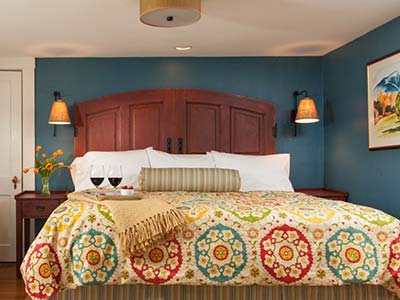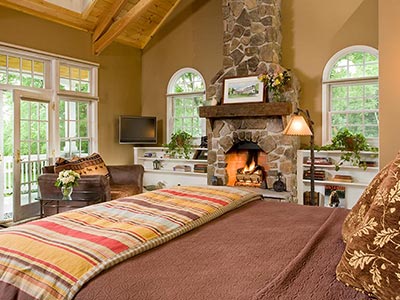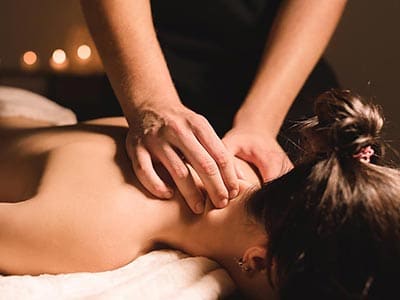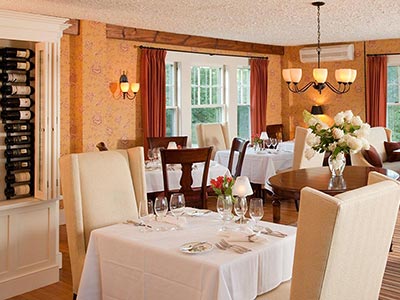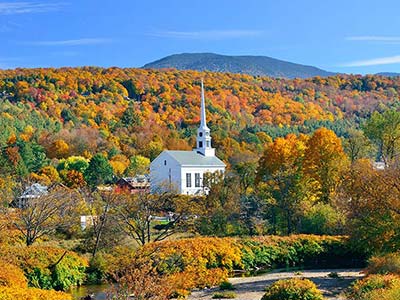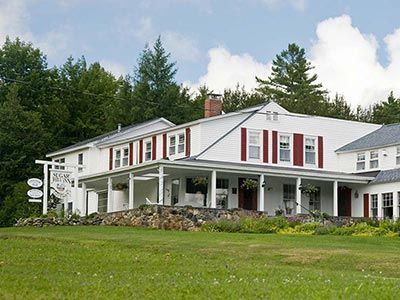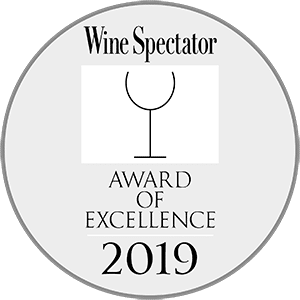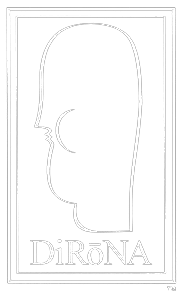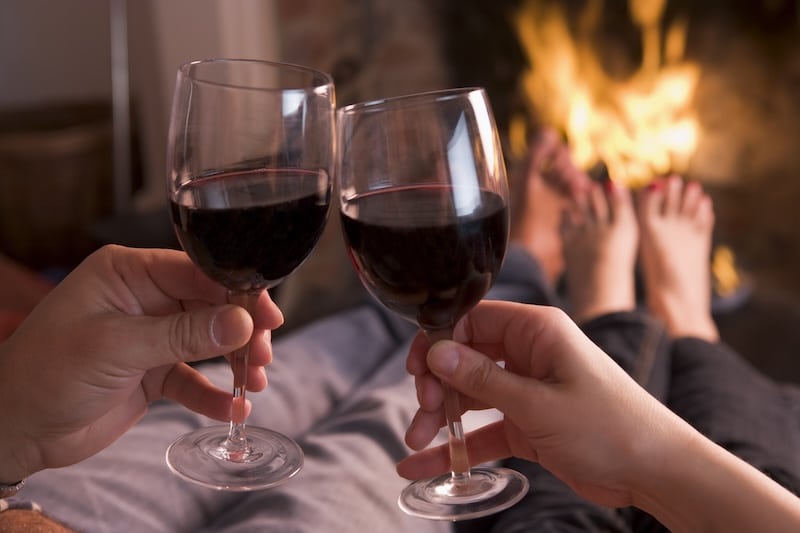Chapter 19 The Art of Innkeeping
As innkeepers of an upscale inn it is our job to share the “good life” with our guests. In a small way we get to share in that life style of great food, fine wine and beautiful and luxurious surroundings.

In April of 2015 we were staying four nights at Hotel La Cep in Beaune France. This hotel, in the heart of Burgundy is the preferred place to stay for wine buyers from around the world. We had two prearranged wine tastings. Wineries give restaurateurs the royal treatment. Our first meeting was at Louis Jadot. Louis Jadot is the largest exporter of Burgundy wines in the world. The facility was 10 minutes out of town in a new and very attractive space. First we were taken to the fermentation room where they explained their approach to wine. In some ways Burgundy is simple to understand. The reds are Pinot Noir and the whites are Chardonnay. However, the French believe in the concept of terroir. The soil and microclimate makes wine from every village in Burgundy unique. Even two vineyards within a single village can be very different. Louis Jadot owns vineyards through out Burgundy and also buys grapes from other growers. It is there goal in making wine to interfere as little as possible so that each wine is an expression its terrior.
Our next stop was the barrel room where we tasted 14 wines straight from the barrel. A special tool called a wine thief is used. They wanted us to taste the small nuance of each village. At past tastings I always ignored the fact that professional wine tasters spit instead of swallow. However, it was 10:00am, we had fourteen wines to taste and I had to drive us back to our hotel in a foreign country with stick shift car. So I tasted like a professional and did not swallow.
After returning to town, having a quick café lunch, our next appointment was at Joseph Drouhin. Here we had a wonderful guide who told us that his grandfather was in the French resistance during World War II. Joseph Drouhin’s wine cellars date back a 1000 years and extends under the historic town of Beaune. Once again we tasted about 14 wines. Since we could walk back to our hotel after this tasting I did not need to be as careful.
The next day we explored the villages driving passed some of the most famous vineyards in the world; Romanée Conti, Pommard, Volnay, Meursault, Clos de Vougeot, Montrachet; This is the holy land for wine lovers. However 10 years ago none of these names would have meant anything to me. In my past life I always avoided French wines because I did not understand them. I have come a long way.
I have always enjoyed wine but before buying the inn my knowledge was average at best. At the French Culinary Institute they had a very brief unit about wine as part of the chef program. We learned the difference between a Cabernet Sauvignon, Merlot and Pinot Noir but not much more.
Orlo, the former owner suggested that I contact Ken Scupp. Ken was a high level executive at Kobrands, a huge distributor and importer of wine. While developing wine lists was not part of his job description he really enjoyed helping new restaurateurs learn about wine. Ken wrote, priced and printed the list containing about 35 wines. Most, of course were from the Kobrand wine portfolio but they were all good picks with wide appeal. The thing about selling the same wines night after night is after awhile you really get to know what you are selling. We would frequently change the wines by the glass so that the staff would have a chance to learn and taste. Our small list gave us the feeling of certainty in the huge and overwhelming world of wine.
In November 2006 we had our first wine dinner. The thinking was, having an event in early November would expand the fall season and give people a reason to stay with us when business normally slows down. Val wrote the menu and Ken paired a wine to each course. Between courses Ken would introduce the wine selection. The dinner was a big success and the event became an annual tradition. After the first year we decided that every year would have a theme and we moved the date to March. So far we have done France, Italy, Spain, Napa and Sonoma, New Zealand, Argentina and Germany. In 2015 we did France for the 2nd time and 2016 will be Italy again.
In preparing the promotional material for the first dinner I learned that Ken was a Certified Specialist of Wine. From a web search I learned the designation was from the Society of Wine Educators. All I needed to do was to join the associate, study their wine manual and take a one hour examine and I too could be a Certified Specialist of Wine. The manual was so full of detail it was unreadable. It was also full of foreign terms. While I can sound out a Spanish or Italian term, the French terms are not pronounced anything like the way they are spelled. So I started self-study with books like the Windows on the World Wine Course that was written so that the average person could understand it. Thinking that a dead line would be helpful I registered for the examination three months down the road. Time flew by and I was not really ready but sat for the exam anyway. I missed passing by just a few points. The pass rate is only 50% of test takers. Being so close I reregistered again for the exam. With additional time to study I was so much better prepared. Once again I missed passing by just a few points. It was obvious that they had made the exam more difficult.
For many working in the industry becoming certified helps them with their career path. Being an innkeeper this is certainly not a requirement. Someday when I do have the CSW designation I will most likely be the only innkeeper who is a Certified Specialist of Wine. For now I am going to let my knowledge of wine grow by every day involvement in the industry, talking with guest, reading, an occasional day of study and travel. When I am ready I will take the exam again and pass.
As I have stated earlier in the book I am a professional student that is always interested in learning new stuff. Wine is one of the most fascinating subjects to study because it includes history, religion, culture, traditions, science, geography, business, travel, food and more.
Learning wine also is about developing your senses. What do you see, taste, feel and smell. The back of the bottle or a wine review might talk about cherries or vanilla however, to the beginner, details might be hard to identify. Developing the senses can’t be rushed. One day while enjoying a glass of wine it will hit you. “Vanilla Wow! I get it”. Now from your studying you will put two and two together. Vanilla comes from aging wine in new oak barrels.

There is research that shows that wine improves the enjoyment of food. It’s not the alcohol because a cocktail does not seem to have the same effect. Wine can take any meal and make it special. When Karen and I cook at home opening up a bottle of wine can make even the simplest meal special. Wine has away of slowing down a meal and encouraging great conversation. I see it in our restaurant; wine drinkers enjoy their dining experience more than the just water please or give me a Bud crowd.
In 2009 we earned the DiRona Award for dining for the first time. To qualify, a secret inspector dined and evaluated our restaurant and we received a very detailed report about all facets of our operations. One of the conclusions was that we had out grown our simple wine list and our beverage service was not equal to the rest of the dining experience. So I set the goal of earning the Wine Spectator award.
How good is good. Selecting the industry’s standard of excellence as our goal forced us to up our game. There are three levels to Wine Spectator Award; Award of Excellence, Best of Award of Excellence and the Grand Award. We have the Award of Excellence. The minimum requirement is 90 wines however we have about 120. For an inn of our size that is a serious undertaking. Most of our competitors have not qualified. In fact, in New Hampshire only 11 restaurants have earned the award. The Bretton Arms and the Manor on Golden Pond are the only other inns on the list. Neither of whom we consider to be direct competitors. On Tuesdays and Wednesdays we frequently dine out. It surprises me how limited the wine list are at the other local restaurants.
To earn the award every restaurant must apply annually. The application includes a one-page description of your wine philosophy and concept. They are very interested to know how you are storing the wine. You must also submit a copy of you wine list and menu. We used an independent consultant to develop our first wining list although I was very involved in the process. Although many wine reps would love to help you they are biased to the line they represent. Our list is large enough to cover all of the international varietals and major wine producing countries at various price points. Have you ever been to a restaurant where the list is so long that you have to make a choice to ignore your partner or read the list? Those are the restaurants where a good sommelier can be very helpful.
There is an important lesson that every restaurateur must learn. Just because I had never purchased expensive wine in my past life does not mean that there aren’t people who can afford, enjoy and want them. Although our average wine sale is $40 per bottle we would be leaving money on the table if we did not also sell wine in the $60 to $150 range. We do have some wines over $150 but that is a very small portion of our overall sales. Research shows that most people gravitate towards the middle of the list. Having expensive wines on this list helps to boost the average selling price.
We actively seek feedback from our guests and two issues arise from time to time. Why don’t we have more wine by the glass and why do we charge so much for them. A wine bottle once open has a relative short life. Being a low volume restaurant if we had too many wines available by the glass, wine would be wasted or served passed its prime. Neither would be a good thing. However we usually have all of the major international varietals covered. For whites that includes Chardonnay, Sauvignon Blanc, Pinot Grigio/Pinot Gris and Riesling. For reds we usually have Cabernet Sauvignon, Merlot, Malbec, Pinot Noir and Red Zinfandel. We also have French champagne, Prosecco and an American sparkling wine by the glass. The sparkling wine is available as splits, the perfect one glass serving. So why do some restaurant charge $6 or $8 a glass when we charge $10 to $15 per glass. They do it by serving cheep super market wine with big markups. Whether we are selling wine by the bottle or by the glass we sell only wines that we believe to be quality.
My father-in-law looking for lively dinner conversation would frequently pose the question “are expensive wines better then cheep ones? I can’t tell the difference. May be its just all marketing.” Since my father-in-law enjoyed playing the devils advocate you never really knew his real position. Since he was not one to buy expensive wine I think what he was really asking is a $10 super market wine much different from a $15 bottle. The answer is both yes and no. As I became more involved in the industry I would be invited to trade functions where I would be exposed to excellent wine and I can say now that there is clearly a difference. But that is not to say that an educated consumer can’t fine an occasional great deal or over pay for something rather ordinary. In a good restaurant the sommelier should be helping you to find those hidden selections of superior quality and value that will pair perfectly with your dinner. I encourage guests to ask questions about our wines. There are so many wines available in today’s market place there are going to be a lot of unfamiliar labels.
The producers of Vino Nobile Di Montepulciano invited Karen and me to a wonderful tasting for the trade in Boston. We even met the Mayor of Montepulciano. After a short presentation it was time for a serious tasting and buffet dinner. There were about 20 different wineries each offering several different wines to taste. We really enjoyed these wines. Karen and I composed a list of our favorites with the intention of adding one of these to our wine list. As a restaurant licensed in New Hampshire we can only sell wine approved for sale in the state. At the time only one of the almost one hundred wines featured at this tasting was available to us. So we added it to our list with excellent result. We have the same issue when we read a great wine review in the trade press only to find that it is not available in New Hampshire.
The best way to learn wine is by travel. In the Spring of 2011 Karen and I planed a trip to Napa and Sonoma. Ken Scupp arranged for several VIP tastings. We also stayed at several wonderful Select Registry inns. Our first stop was Domaine Carneros. Carneros, just north of San Francisco Bay, because of its cool climate is perfect for Pinot Noirs and sparkling wines. The famous French Champagne house of Tatingers owns Domaine Carneros. In keeping with their pedigree they designed their winery to look like an elegant French Chateau. We sat on the front patio, over looking vineyard, sampling Champagnes and Pinot Noirs paired with tasty treats. I remember learning that pink champagne pairs well barbeque.
Our next stop was Benziger in Sonoma. A member of the Benziger family gave us a personal tour of the vineyard and explained the importance to them of Biodynamics Viticulture. Biodynamic viticulture is a philosophy combining the maintenance of sustainable soil fertility and the recognition of the link between plant growth and the rhythms of the cosmos.
In Napa we visited Cakebread. Cakebread is known for extremely high quality and expensive wine. We have a few of their wines on our list but because of their high price they are slow sellers. There is a buzz in our kitchen when a really expensive bottle is sold. We have a 2007 Cakebread Celler, Dancing Bear Ranch, Howell Mountain at $182. This is our most expensive wine on the list. If I can’t sell it I am going to have a fabulous retirement party some day. To protect their reputation they are careful to sell only to upscale restaurants. The winery is beautiful. It looked more like a boutique hotel then a factory. We had a private tour of the facility ending up at a conference room over looking the production floor. We sampled wine, talked about our restaurant and learned a ton about wine. It surprised me to learn that their grapes are all hand picked. This winery visit along with the others were arranged by Ken Scupp. Kobrands in New York has a whole department that arranges VIP winery visits for their customers.
Wineries are everywhere in Napa. Some are the big names that everyone knows like St Francis and other are small boutique producers that rarely sell wine out of state. Because land values are so high that Napa focuses primarily on premium wine. The cheap California wines are from the central valley.
Our next appointment was at Sequoia Grove. A chocolate and Cabernet Sauvignon paired tasting had been arranged. Our host poured us a glass to sip while touring the vineyard and winey. At the end of the tour we were brought to a large conference room with a large board table. At one end of the table were two placemats. On each place mat were three glasses of Cabernet Sauvignon paired with fabulous chocolate. Our host said enjoy and left us to experience the chocolate and wine in privacy and undisturbed. It was romantic, delicious and decadent all at the same time. If cooking a romantic dinner at home I would highly recommend pairing a great cab with equally great chocolate.
Needing a break from wine we decided to tour the art museum at Hess. On the way out I could not resist taking a quick look in the tasting room. Since we did not have a prearranged tasting here they wanted to sell us a tasting. I said I was not interested because we had already had two tastings so far today. I explained how I owned a restaurant and asked, “if I only have room for one of your wines on my list what would you recommend.” He poured us each a sample. Karen absolutely loved the wine and decided that we must add the Hess Collection, Mount Veeder, Napa Valley to our list.
Upon returning to New Hampshire we learned that Distinguished Restaurants of NorthAmerica was going to be holding its annual meeting in Napa in the spring. Believing that being exposed to the food and wine culture of Northern California would be inspiring for the chef we invited Chef Val and his wife Nancy to join us for this return visit to California.
Belonging to DiRona is a real privilege for the Sugar Hill Inn. Most of the member restaurants are not only larger but many of them are famous with celebrity chefs. Whether it is called an annual meeting, trade show or conference I have been to more then my share. While most come with power point presentations and this was no exception, this meeting was all about food and wine. The first day we had a growers’ luncheon at the Napa campus of the CIA (Culinary Institute of America). We started with a tour. Very impressive kitchens. The Napa Valley Grape Growers Association sponsored the lunch. The food was marvelous but it was really all about the wine. Every producer was coming by the table to pour his or her best. You would have a half glass of one wine and then pour it out to try another. Reflecting back on it we were drinking wines that on a restaurant’s list would be between $75 and $200 per bottle.
On another day we went to a workshop at Silver Oak about aged wine, lead by the wine makers from Cakebread, Silver Oak, Chateau Montelena and others. Chateau Montelena was one of the winners of the Judgment of Paris. All of the wineries participating in this workshop were the best of the best. These were wines that are generally only in the hand of collectors. Most wines are not made to age. Unless a wine is perfectly balanced to start with time will only magnify its flaws. These wines were magnificent. The other highlights of the meeting were the lunch at Francis Coppola Winery and the reception in the Beringer wine cellar.
On the last day of our honeymoon, in Italy, we stopped in the beautiful hill town of Orvieto for lunch. We sat in the piazza across from the most amazing cathedral, circa 1330, enjoying home made pasta and drinking the refreshing local white wine. I can recreate that special moment, at home by cooking a favorite pasta and by opening a bottle of Orvieto. That is the magic of wine. The Inn’s wine list includes a Ruffino Orvieto Classico along with our other favorites from Italy.
I hope that is chapter might inspire others to explore the world of wine. However I certainly don’t want to give the wrong impression that the enjoyment or even caring about wine is a prerequisite to enjoying a stay at the Sugar Hill Inn. The point is we took one element of hospitality where we were weak and focused on it until we were strong and enjoyed the process. Over our ten years we have repeated this approach over and over in building the business.
Want to know more? Read our book “Sugar Hill Inn Art of Innkeeping.” Available from Amazon and Barnes and Noble.

